- Best Soaker Hose Options Your Yard Truly Needs This Year - January 5, 2024
- Best Tomato Planters You Should Really Consider for Your Garden - December 21, 2023
- Best Home Depot Tomato Cages to Support Your Plants - December 16, 2023
Many of my favorite summertime memories revolve around a watermelon. One particular summer day was spent munching on a watermelon with my ten-year-old nephew. We finished it that day. So, it did not come as a surprise to hear that he recently purchased a $35.00 watermelon while stationed in Japan.
That is a committed fondness I can understand. I imagine you understand it too, and that is why you are taking the time to read about yellow vs. red watermelon. I want to make your read worth it, so I plan to walk you through the world of watermelon, specifically the yellow and red varieties. We’re going to discuss the obvious and the not-so-obvious differences between these two types.
Of course, we’ll also discover how similar they are as well. I have my opinions about which is better, and while I plan to share those with you, I hope to leave the discussion open for debate. So, without further ado, let’s compare and contrast yellow and red watermelons.
Bottom Line Up Front
These two types of watermelon have a lot in common. For instance, they have similar textures, flavors, outer skin, and care requirements. If you have experience growing one type of watermelon, you can grow the other because they don’t need anything different. Really, it is only when you cut them open that you’ll see a difference.
My personal opinion is that most red watermelon varieties are better than yellow watermelon varieties. Here are the reasons I give to back up my opinion:
- Red watermelon is juicy and sweet, but not too sweet. I don’t like the sickly sweet taste of some yellow watermelon varieties.
- Red watermelon is easier to find at grocery stores and farmer’s markets.
- Red watermelon doesn’t cost as much as a yellow watermelon, at least where I live.
- Red watermelon contains lycopene, which is a natural compound that may fend off cancer cells.
While I do prefer the taste of red watermelon over yellow watermelon, I will admit that the uniqueness of yellow watermelon makes them more attractive. Remember, this is just my personal opinion. You can end this debate with completely different conclusions, and that’s okay.
Main Differences Between Yellow Watermelon vs Red Watermelon
The main differences between yellow watermelon vs red watermelon are:
- Red watermelon contains lycopene, whereas yellow watermelon does not.
- Red watermelon is more likely, due to its quantity of lycopene, to cause intestinal distress, whereas yellow watermelon, with its lack of lycopene, is not.
- Yellow watermelon has a slightly sweeter, honey-flavored taste.
- Yellow watermelon contains more beta-carotene.
- Yellow watermelon was cultivated first, whereas red watermelon was cultivated from yellow watermelon.
- Yellow watermelon is commonly found in desert regions, whereas red watermelon is found in a variety of climates.
Key Features of Yellow Watermelon
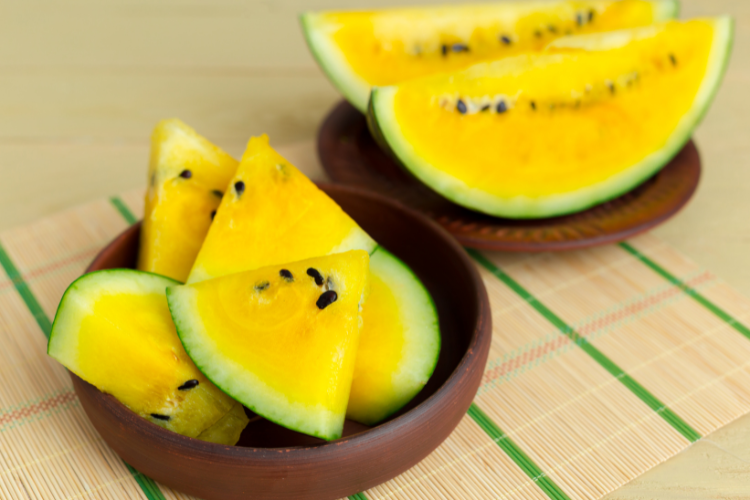
If you purchase yellow watermelons, you’ll soon discover that their key features are very similar to the common red watermelon. They are available in seeded and seedless varieties. They are sweet and juicy when eaten. They have a thick green rind that can be pickled, stirfried, or thrown into a smoothie.
Where yellow watermelon differs from its red cousin is in coloring and nutrition. Obviously, yellow watermelons are yellow, which hints at their nutritional value.
Instead of containing lycopene, which is the reason why watermelons and tomatoes are red in color, yellow watermelons contain beta-carotene. Beta-carotene is the reason why carrots and sweet potatoes are a yellow-orange color.
Pros
- Yellow watermelons are full of beta-carotene, which is beneficial to heart health
- Yellow watermelons are available with or without seeds
- Yellow watermelons have a sweet, honey-flavored taste
- Yellow watermelons are juicy
- Yellow watermelons grow well in desert-like conditions
- Yellow watermelons contain approximately 46 calories per cup
- Yellow watermelons avert dehydration
- Yellow watermelons may be a healthier option for diabetics (always check with your doctor first)
Cons
- Yellow watermelons may be difficult to find at a local grocery store
- Yellow watermelons are rare, so they may be pricier
Featured Yellow Watermelon Varieties
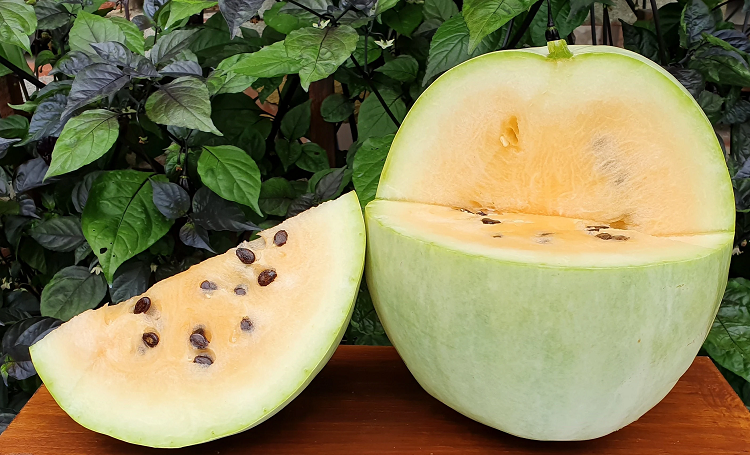
Yellow Buttercup
This is a variety that I really enjoy. Its texture is crisp and juicy, while its flavor is sweet. As an added bonus, this is a seedless variety. Growing a Yellow Buttercup watermelon is not difficult, and I think it is worth the effort.
Yellow Doll
At only 5 to 7 pounds tops, Yellow Doll is an adorable summer snack. While I do think these taste good, I’m not a huge fan of the many seeds this variety contains. But, that is no reason you should avoid them.
Desert King
What I love about this variety is its ability to withstand drought while growing. This means I don’t have to baby them so much. Now, when it comes to eating them, I don’t have much love for them.
They are sweet and juicy, but the texture and the seeds are not appealing to me. Just my personal opinion, though. I say decide for yourself.
Key Features of Red Watermelon
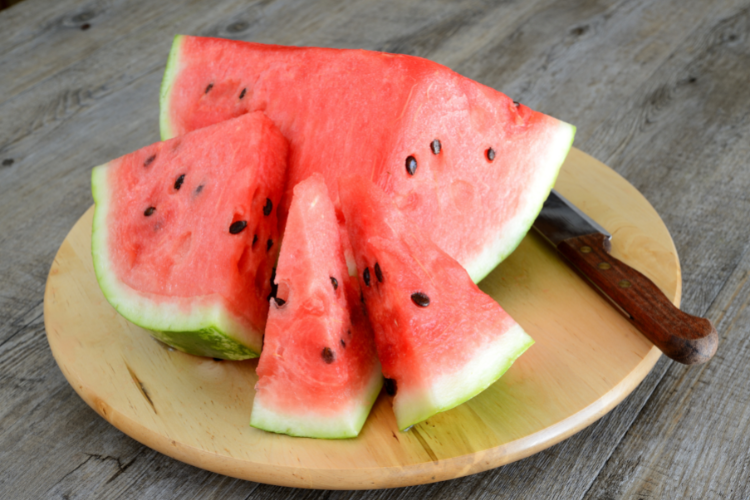
This may be one of the most common fruits purchased. But commonality does not equal familiarity. Many of us purchase and consume red watermelon without ever considering its key features. Perhaps we should take a few moments to contemplate what we eat and why we eat it. Then, we may build better eating habits.
Once I did take a moment to observe the features of red watermelon, I realized that many of them are why I love this fruit so much. These key features include:
- A thick rind that always contains green but may sometimes be striped white
- An edible rind
- Seeded and seedless varieties
- Sweet and juicy red flesh
- Cancer-fighting lycopene
Pros
- Red watermelons are easy to grow in most climates
- Red watermelons are packed with nutrition (vitamins A, B, & C along with lycopene)
- Red watermelons are sweet and juicy (different varieties have different levels of sweetness)
- Red watermelons flavor can be enhanced with a little salt
- Red watermelons are available in seedless and seeded varieties
- Red watermelons are commonly found at any grocery store
- Red watermelons may be less expensive since they are a common summer fruit
- Red watermelons avert dehydration
- Red watermelons may help with skin issues, muscle soreness, metabolism, and digestion
Cons
- Red watermelons may not be healthful for diabetics
- Red watermelons can cause allergic reactions such as hives
- Red watermelons can cause intestinal distress when consumed in large quantities
Featured Red Watermelon Varieties
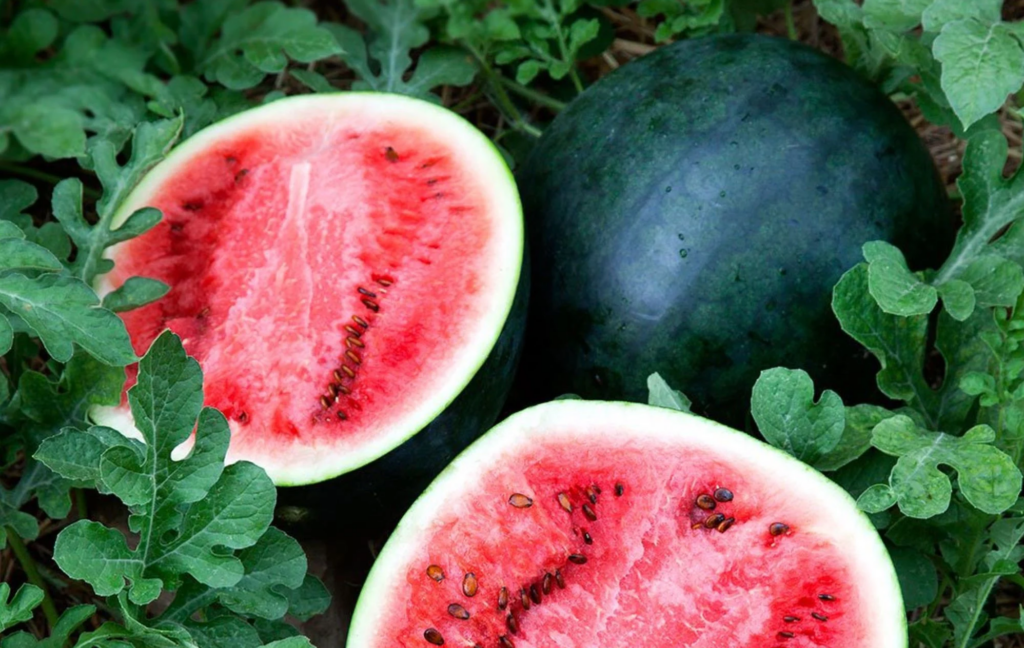
Moon and Stars
Have to be honest about this variety – it is on my “to try” list. There’s been no opportunity for me to purchase or grow one of these yet. One reason why I want to try this variety is so I can gaze at the uniquely beautiful skin that looks a little like a speckled starry sky.
Another reason is so I can taste this fruit that won a spot on the Slow Foods Ark of Taste. It must be good.
Sugar Baby
This is a popular variety because it so compact in size and sweet in taste. While it certainly isn’t my favorite variety, I think it is one that I enjoy splurging on every so often.
Crimson
With one of these watermelons on hand, I can feed a house full of hungry people or myself and my nephew. Averaging 25 lbs. means this variety gets huge. Not only do I love that I can share a slice or two of this watermelon, but I can rest assured that it’s going to taste amazing. Its texture is just as a watermelon should be – crisp, crunchy, juicy, and sweet.
Alternatives to Consider
I know you’re going to be excited to discover that there are other types of watermelon besides red and yellow. Who knew there were so many lovely colors available? Get your forks and knives ready because I would like to introduce you to black and white watermelons now.
Black Watermelons
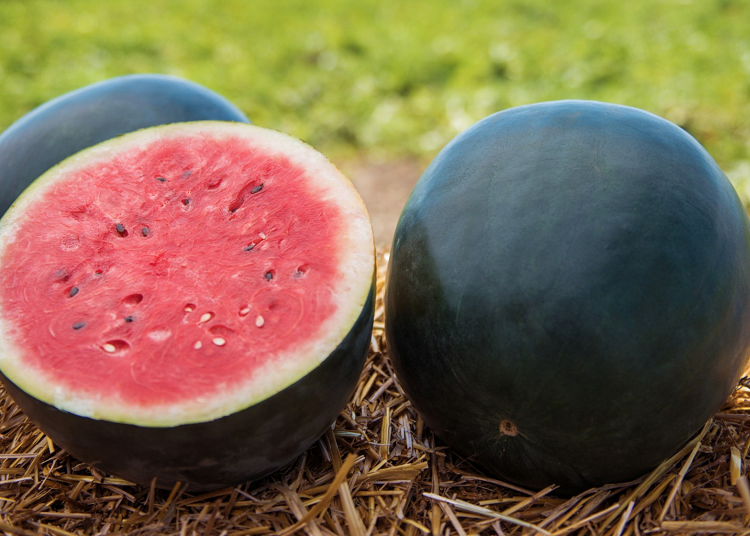
Okay, so this type of watermelon doesn’t actually have black flesh; it is the rind that is black, or almost black. The inside is bright red, juicy, and delicious. These are not a rare type of watermelon, so you may be able to find them at your local grocery store or farmer’s market without much trouble. Black Diamond is the most common type of black watermelon.
Pros
- Black watermelons are easy to grow in most climates
- Black watermelons are packed with nutrition (vitamins A, B, & C along with lycopene)
- Black watermelons avert dehydration
- Black watermelons are not too rare
- Black watermelons are juicy and sweet
Cons
- Black watermelons may not be healthful for diabetics
- Black watermelons can cause allergic reactions such as hives
- Black watermelons can cause intestinal distress when consumed in large quantities
White Watermelons
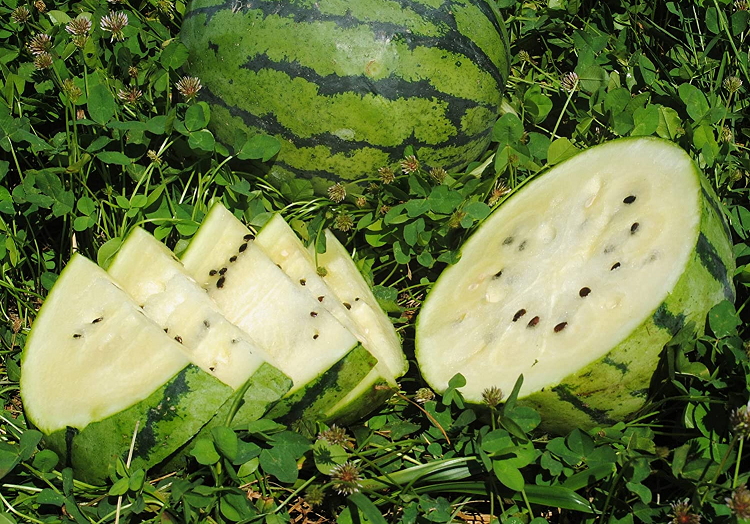
These varieties do contain white flesh while maintaining a typical green rind. On the outside, a white watermelon will look just like a red or a yellow watermelon; it is only when it has been sliced open that you can see the difference.
Just like yellow watermelon, the reason for the white flesh is that these varieties lack lycopene. Nevertheless, you’ll find that they taste like watermelon even if they don’t look like watermelon. Some of the most common varieties of white watermelon are Cream of Saskatchewan, Japanese Cream Fleshed Suika, and White Wonder.
Pros
- White watermelons are easy to grow in most climates
- White watermelons avert dehydration
- White watermelons are juicy and sweet; in fact, most varieties rank very high on the Brix scale
Cons
- White watermelons may not be easy to find at grocery stores
- White watermelons may cost more than red watermelons
FAQs
Answer: Have you ever wondered which watermelon is the sweetest? Perhaps you just wanted to know if the watermelon at your local grocer is going to have the lovely summery sweetness you long for at your family picnic. Well, wonder no more. These quandaries are the problems of the Brix scale.
The Brix scale can determine how sweet a variety of watermelon is based on how much sucrose every 100 grams of content contain. For example, a watermelon with 12 grams of sucrose per 100 grams of content will rank at 12.0 on the Brix scale. Any watermelon that ranks this high is very sweet. Most watermelon varieties range somewhere between 7.8 and 8.2.
Just in case you were wondering, the sweetest watermelon variety is the Sultan. It ranks at 12.3.
Answer: For those of us who enjoy eating and growing watermelon, it can be helpful to know what types of plants to grow nearby. Here are a few of my favorite watermelon garden companion plants:
Beans – I like to grow these around my watermelon so that the soil is infused with more nitrogen—the better the soil, the better the melon.
Mint – I love growing mint even when I can’t plant watermelon. This herb works so hard in the garden and in the kitchen that I cannot say enough good things about it. As a watermelon garden companion, it repels aphids while attracting beneficial pollinators. Plus, it just smells so good around the yard and it makes a great watermelon and mint juice.
Marigolds – Not only do these smell amazing and look beautiful, but they also attract plenty of pollinators to my garden. Typically, I set these on the perimeter of my garden, so they don’t get in the way of my watermelon vines, but I don’t stress over this. They are perfect friends, and I think you’re going to enjoy having them around too.
Answer: While it is good to know which plants are good garden companions for watermelon, it may actually be more important to know which are bad companions. Here are three plants that you should never set near your watermelon garden:
Cucumbers – If you want to watch your cucumbers and watermelon feasted upon by cucumber beetles, then, by all means, plant these two together. The sad fact is, that cucumber beetles are nasty pests, so don’t give them the upper hand by setting two of their favorite munchies side-by-side.
Potatoes – Aphids love these tubers, and aphids love watermelon. Don’t let your garden be host to these little pests – separate your potatoes from your watermelon. You may never rid your garden of aphids, but you can at least limit their impact.
Squash – This is another plant that attracts beetles like crazy. Keep these far away from your watermelon, and while you’re at it, your cucumbers too.
In Conclusion
In my opinion, all watermelon is wonderful and delicious. There are just a few reasons why I slightly prefer red watermelon varieties over the yellow watermelon varieties. This, of course, doesn’t mean I won’t devour a plate of yellow watermelon given the chance. It just means I might eat the red watermelon first.
I hope this article has helped you understand the world of watermelon a little better. Now, you have the knowledge and, hopefully, the inspiration to go try new varieties. Here’s to many years of fruitful gardening and happy eating.
If you’re interested in growing the best watermelon ever, you may want to read our other articles on this heavenly fruit. I highly recommend that you browse the following:
- Types and Varieties of Watermelon You Should Know Of
- Best Watermelon Companion Plants
- How to Start a Vegetable Garden: All You Need to Know

